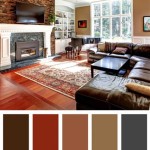Decorative Toy Box Solutions for the Living Room
The contemporary living room often serves a multitude of purposes. It acts as a space for relaxation, entertainment, and frequently, a play area for children. This dual function necessitates creative storage solutions that can seamlessly integrate into the room's aesthetic without compromising functionality. The decorative toy box emerges as a practical and visually appealing answer to this challenge, offering a means to conceal clutter while contributing to the overall design of the living space.
A well-chosen decorative toy box transcends the simple utility of storage. It becomes an element of interior décor, mirroring the homeowner's style and preferences. Far from being a mere receptacle for toys, these boxes can enhance the room’s ambiance and complement its existing furniture. The key lies in selecting a box that aligns with the room's color palette, material composition, and overall design theme.
The market offers a diverse array of decorative toy boxes, ranging from handcrafted wooden chests to sleek, modern containers made from materials like fabric, metal, or plastic. Each style carries its own unique set of advantages and aesthetic qualities, making the selection process a crucial aspect of maintaining a cohesive and visually pleasing living room environment. Factors such as size, shape, material, and design features all play a significant role in determining the suitability of a toy box for a specific living room setting.
Functionality and Capacity
When considering a decorative toy box, functionality is paramount. The internal capacity of the box should be sufficient to accommodate the volume of toys that need to be stored. Consider the types of toys that will be housed within the box. Larger toys, such as stuffed animals and vehicles, will necessitate a larger, deeper box. Smaller toys, such as building blocks and action figures, may be better suited to a box with compartments or dividers to aid in organization.
Ease of access is another important functional consideration. The lid of the toy box should be easy for both adults and children to open and close. Features such as soft-close hinges can prevent the lid from slamming shut, reducing the risk of injury. Some toy boxes incorporate cut-out handles or finger holds to facilitate lifting and moving the box, particularly useful for boxes that are frequently repositioned within the room.
Safety features play a critical role in ensuring the well-being of children. The toy box should be constructed from durable, non-toxic materials. The lid should have adequate ventilation holes to prevent suffocation if a child accidentally becomes trapped inside. Avoid toy boxes with sharp edges or corners that could pose a safety hazard. Regularly inspect the toy box for any signs of wear or damage, such as loose hinges or splinters, and repair them promptly.
Beyond simple storage, some decorative toy boxes offer additional features that enhance their functionality. These may include built-in seating, integrated bookshelves, or removable trays for organizing smaller items. These added features can further optimize the use of space and provide added utility beyond basic toy storage.
Aesthetic Integration and Design Styles
The aesthetic appeal of a decorative toy box is equally important as its functionality. The box should blend seamlessly with the existing décor of the living room, enhancing its overall visual appeal. Consider the prevailing design style of the room when selecting a toy box. For a traditional living room, a wooden chest with carved details and a warm finish may be a suitable choice. For a modern living room, a sleek container with clean lines and a minimalist design may be more appropriate.
The color of the toy box should complement the room's color palette. If the room features neutral tones, a toy box in a bolder color can add a pop of visual interest. Conversely, if the room is already brightly colored, a toy box in a more muted tone may be a better choice. Consider using the toy box as an opportunity to introduce a complementary color or pattern to the room. For example, a toy box with a geometric pattern can add visual interest to a room with solid-colored furniture.
The materials used in the construction of the toy box can also contribute to its aesthetic appeal. Wooden toy boxes offer a classic and timeless look, while fabric-covered toy boxes provide a softer and more textured feel. Metal toy boxes can add a touch of industrial chic to a modern living room. The choice of material should be guided by the overall design aesthetic of the room and the desired level of durability.
Consider the placement of the toy box within the living room. Position the box in a location that is easily accessible to children but does not obstruct the flow of traffic. A corner of the room or an area near the play area may be ideal. The toy box can also be used as a decorative element in its own right. Adorn the top of the box with decorative items, such as books, plants, or picture frames, to further integrate it into the room's design.
Material Choices and Durability
The choice of materials significantly impacts the durability and longevity of the decorative toy box, as well as its overall aesthetic. Wood remains a popular choice due to its inherent strength, versatility, and natural beauty. Solid wood toy boxes offer superior durability and can withstand years of use. However, they tend to be more expensive than toy boxes made from engineered wood, such as plywood or MDF (Medium Density Fiberboard).
Plywood and MDF offer a more affordable alternative to solid wood. These materials are relatively strong and stable and can be finished with paint, stain, or veneer to achieve a variety of looks. However, they are generally less durable than solid wood and may be more susceptible to damage from moisture or impact.
Fabric-covered toy boxes offer a softer and more comfortable option. These boxes typically feature a frame made from wood or metal, covered in fabric such as cotton, linen, or synthetic materials. Fabric-covered toy boxes can add a touch of warmth and texture to a living room, but they may be more difficult to clean than toy boxes made from wood or plastic.
Plastic toy boxes are a lightweight and durable option. They are easy to clean and resistant to moisture, making them ideal for storing toys that may be damp or dirty. Plastic toy boxes are available in a wide range of colors and styles, and they are generally more affordable than toy boxes made from other materials. However, they may not be as aesthetically pleasing as toy boxes made from wood or fabric.
Metal toy boxes offer a durable and stylish option for modern living rooms. They are typically made from steel or aluminum and finished with powder coating or paint. Metal toy boxes are strong and resistant to damage, and they can add a touch of industrial chic to a room. However, they may be more expensive than toy boxes made from other materials, and they can be cold to the touch.
When selecting a decorative toy box, consider the durability of the materials and the construction quality. Look for boxes with reinforced corners, sturdy hinges, and durable finishes. Choose materials that are appropriate for the intended use of the box and the overall design aesthetic of the living room.
Ultimately, the choice of a decorative toy box for the living room involves a careful balancing act between functionality, aesthetics, and durability. By considering these factors thoughtfully, homeowners can select a toy box that not only provides practical storage but also enhances the overall beauty and harmony of their living space.

14 Living Room Toy Storage Ideas Every Pa Needs Care Com Resources

Toys Toy Storage For Tiny Homes The C Cottage

7 Toy Storage Ideas For Living Room Organised Pretty Home Organization

Living Room Toy Storage How To Have A Beautifully Organized When You Kids

Decorative Toy Storage Ideas For Living Rooms And Small Spaces Remodelaholic

Decorative Toy Storage For The House Without A Playroom

10 Clever Ways To Create Toy Storage Ideas For Living Room Housetodecor Com

30 Best Toy Organizer Ideas Diy Kids Room Storage

Bloomsbury Market 26cm Taupe Colour Faux Leather Storage Box Set Decoration For Bedroom And Living Room Furniture Co In 2025 Jewelry Jewellery Boxes

Decorative Toy Storage Ideas For Living Rooms And Small Spaces Remodelaholic
Related Posts







